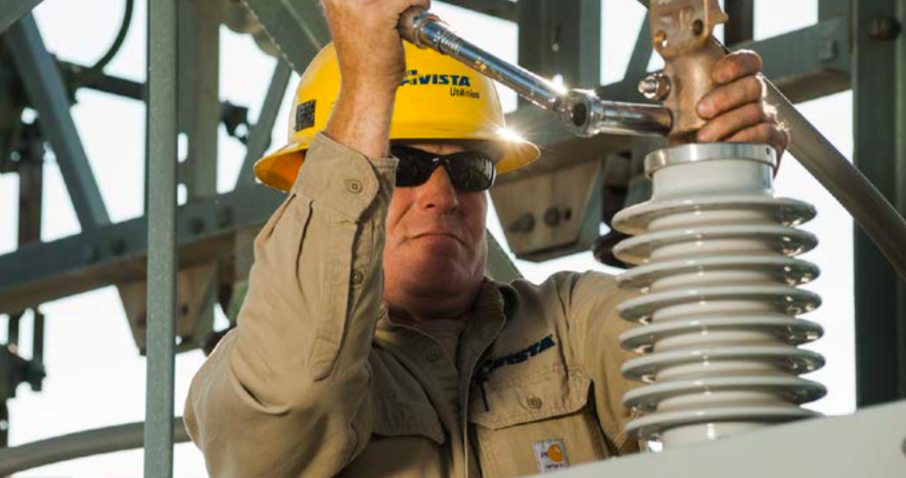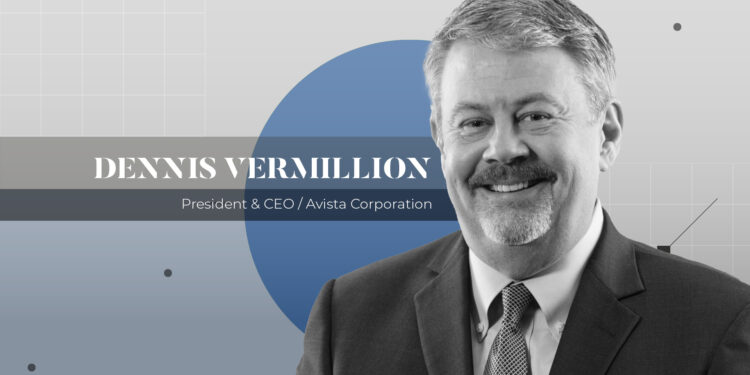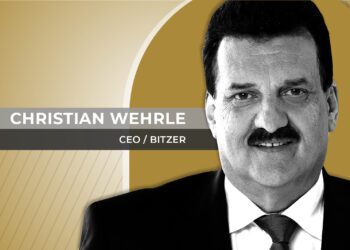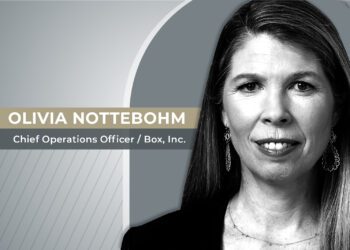Under recently appointed CEO Dennis Vermillion, energy company Avista Corporation is embracing technology and implementing aggressive clean energy goals.
Having spent his entire career at Avista, Dennis Vermillion was in many ways ideally positioned to take over as CEO of the company in 2019. Yet he worked closely with his predecessor and current chairman of the board, Scott Morris, to lay the foundations for the company’s ongoing success moving forward, with the goal of being a great utility for the benefit of all its stakeholders. “I started with Avista 34 years ago as an engineer and had the opportunity to do a lot of different things within the company, so I really grew into the chief executive officer role,” Vermillion told CEO Magazine in an exclusive interview. “We employ some of the most talented people in the business, and I look forward to working with our executive team and employees to create the next chapter of our company.”
Avista is a U.S. energy company head-quartered in Spokane, Washington, which produces, transmits, and distributes electricity and natural gas to residential, commercial, and industrial customers. The company was founded 131 years ago in 1889 as Washington Water Power Company. As of 2020, Avista provides energy services to 393,000 electric and 361,000 natural gas customers in three western states. Its service territory covers 30,000 square miles in eastern Washington, northern Idaho, and parts of southern and eastern Oregon, with a total population of 1.7 million people.
Key advantages
As he surveyed the energy landscape as CEO, Vermillion identified several key values that have contributed to the company’s strong foundation, including Avista’s rich history of innovation and relentlessly entrepreneurial spirit, its long-standing commitment to environmental stewardship, and its pride in being a devoted corporate citizen that invests millions of dollars annually to enhance the economic vitality of the communities in its service territory.
“Because of who we are and how we’ve grown up in the communities that we serve, I think we’re held in high standing, and that is all driven by our commitment to providing our customers with a clean, safe, and reliable service at reasonable rates,” Vermillion said. “We’re innovative, we’re nimble, we’re entrepreneurial, and we have a diversity across our leadership team, all of which contributes to our collective strength. Furthermore, because of where we’re located, in a very beautiful part of the world with a quality of life that is desirable for many, we have a real opportunity to retain the people we’re able to attract. Speaking of location, understandably we also start from a better place in terms of our clean energy goals as well, as 50 percent of our electric generation is hydropower. With some of the other renewable resources available to us, our current generation mix is already nearly 60% carbon free. Ultimately, it’s about achieving a balance between clean, reliable, and affordable energy. It’s one of the biggest challenges facing the entire industry right now.”
Focus four areas
Vermillion highlighted four primary focus areas that Avista is currently looking at to drive its path forward. The first is customer service, putting the customer at the heart of everything the company does; the second is the quality and talent of Avista’s workforce; the third, meeting and surpassing the expectations of shareholders, and the fourth, wisely investing capital to modernize the grid to meet utility and customer needs both today and tomorrow.
“At a time of great change in the energy industry, I’m excited to meet the future head-on,” Vermillion insisted. “We’re working really hard on investing in new technologies and infrastructure to improve service delivery and the customer experience in general. Probably the most significant capital investment for customers includes our smart meter deployments that are underway. This technology creates the foundation that will transform how we partner with customers going forward.
“In terms of people, the talent and culture we have within our organization are extremely important,” he added. “Having grown up in the company and had a chance to shape that culture, it really is one of the main advantages of being a smaller utility company. With a highly engaged workforce and a culture that is advancing and growing, it’s easier to meet the challenges we face both as a company and as an industry. Meeting and surpassing expectations of shareholders is an important goal for any company, and we have a history of being able to do that.”
“Finally, we’re intentionally investing in innovation to modernize the grid. Avista has a very rich history of innovation— it’s in our DNA. We know the industry is changing rapidly and in order to build on our success and remain relevant, we need to be nimble and innovative and have a culture that thrives in that environment. Many of us within the leadership team have been with the company for a long time and given our niche we see tremendous opportunities to accomplish great things through innovation.”
A carbon-free future
Avista currently aims to serve its customers with carbon free electricity by 2045 and carbon neutral electricity by the end of 2027. To this end, Vermillion highlighted the measures the company is taking on what he calls the “other side of the meter,” employing edge-of grid technologies to increase the use of renewables and energy efficiency on the one hand, and seeking to change the way the company operates its facilities and engages customers on clean energy solutions on the other.
Vermillion described how Avista is reimagining the future of energy with its zero energy, zero carbon Catalyst project at the South Landing Development in Spokane, which aims to be one of the most sustainable buildings in North America. Adjacent to Catalyst is the Scott Morris Center for Energy Innovation, which will house a centralized energy plant that will allow the Catalyst and Morris Center to share energy among themselves and other buildings through a new, innovative shared energy model called an eco-district.
“The building is named after Avista Chairman Scott Morris because he had the bold vision to create what he called the Five Smartest Blocks in the World and intentionally build a technology-rich space for learning, research, and business,” Vermillion elaborated. “Avista provided the land to make it happen and recruited the right partners to share our vision. We’re already attracting some of the brightest engineers in the industry to come and work with us in our living laboratory to test ideas and gain insights about how to share energy. What we learn could transform how the grid of the future will operate.”
Supply chain excellence
With nearly $300 million in contract services and more than $200 million of product procurement per year, Avista employs vendor scorecards to cultivate and maximize the potential of strategic relationships. According to Vermillion, the approach has proven to be highly successful in managing valuable relationships and building trust between Avista and its partners.
“What it does is allow us to identify top-tier vendors through a number of different criteria,” he said. “We grade them throughout the year and it allows us to provide them with feedback on what’s working and where there may be gaps. But it works the other way as well. Because our supply chain partners often work with other utilities, they can share industry best practices with us that can help enhance our own processes.”
Above all, Vermillion stressed Avista’s commitment to supporting the economic vitality of the region it serves. He believes that close and long-held ties to such communities are the bedrock that has enabled the company to continue advancing and also provide the strongest foundation for its future.
“One of the things I learned early on during my 34 years with the company is just how ingrained we are in the communities we serve,” Vermillion emphasized. “While we may be one of the smaller utilities in the energy industry, we are a big company in the eyes of the people living in the communities that depend upon us, and with that comes tremendous responsibility. As the incoming CEO of Avista, it’s both an honor and a privilege to carry that legacy forward.”














